If you are looking for a quick and comfortable meal, it’s easy to pull over and take a break at an all-American roadside diner. For direct service take a seat at the counter and satisfy your appetite with a milkshake and a just off-the-grill cheese sandwich, crispy on the outside and warm on the inside. If you prefer, slide into a booth and waitstaff will be on the ready to provide a fool proof family meal of hamburgers, fries, and a soda on the side.
For decades the shiny chrome-trimmed diners have offered service in a casual atmosphere to travelers and locals alike. The typical diner provides a large menu with a combination of American cuisine such as hotdogs, fries, onion rings, sandwiches, soda, pie, ice cream, and milkshakes. Frequently opened for 24 hours a day the diner features breakfast fare such as eggs, omelets, toast, and bacon or, in the evening, meatloaf and mashed potatoes. Eating at a diner is just plain fun.
There are several factors that contribute to the evolution of these roadside eateries, and it is interesting to take a look at them.
One trend came about in the late 1800s. Horse drawn lunch wagons appeared on the scene providing walk-up service through windows located on either side of the cart. Commercial production of the lunch wagons began in 1887 by a man named Buckley in Worchester, Massachusetts. Buckley soon had a competitor named Palmer who created fancy late night wagons until 1901. The trend has not died out. If you visit any urban area you are bound to find a lunch truck or food cart selling anything from hot pretzels to coffee and sandwiches.
With the onset of train travel came the dining car. Here is where the roadside diner got its elongated look. The prefabricated diner was made to fit into a small lot and was delivered via railway or truck. Although most diners were constructed specifically for restaurant purposes there are some that were in fact refurbished rail cars. When trains began to adopt the streamlined, chrome-trimmed look–––diners did as well.
As roadways expanded and automobile travel increased in the 1940s, so did the need for places to dine. Diners, often run by small business owners, popped up across America.
Here is a peek at a few of these eateries.
The Makris Diner is located on the Berlin Turnpike in Wethersfield, Connecticut. The prefabricated diner was manufactured by the J. O’Mahoney company in Elizabeth, NJ, one of the largest companies specializing in these types of structures. The Makris Diner has been serving customers traveling along the Berlin Turnpike since the early 1950s. Berlin Turnpike is a 12 mile-long highway connecting Hartford and Meriden, CT. It is famous to this day for its neon signs, car-culture eateries, and kitschy architecture.
If you passed through Lebanon, PA, in the mid-century you may have stopped at Pushnik’s Diner. The original model was built by the Patterson Vehicle Company featuring their Silk City Diner division. The Pushnik brothers, Edward and Andrew, bought the Star Diner in 1946 and renamed it the Pushnik Diner in 1948.
The Pushnik brothers were an interesting lot. The brothers, there were 10 altogether, fluctuated between illicit gambling activities and WWII heroism, with a fair dose of charity thrown in for good measure. In 1937 Louis Pushnik was arrested for operating a slot machine in one of the family’s establishments. In 1939 Edward and Andrew were also arrested for gambling activities at family-owned properties.
Conversely, many of the brothers served in WWII with Edward earning the Purple Heart, two Bronze Stars, and two Oak Clusters. After the war the Pushnik clan continued to operate restaurants and diners in Lebanon. Edward went on to coordinate the local “Buck-a-Cup’ program that raised more than $8 million for children with disabilities.
The Ayers Diner was located in Salisbury, Maryland. In 1947 Charles Ayers and his wife Mary opened the Ayers Diner at North Salisbury Boulevard. By 1949 they extended the diner by adding a stucco building in the back to provide seating for another 66 customers. Still not fully satisfied Ayers replaced the old diner in 1952 with a prefab diner made by the Mountain View Company based in Singac, New Jersey.
The new diner had the capacity to seat 102 people and ran Ayers about $75,000 to purchase. He chose a light rose color scheme for the interior and he provided his waitresses with rose colored uniforms to tie the theme together. It must have been a sight to behold!
The Ayers Diner resided on a small lot near the boulevard. By 1965, on-street parking laws changed in Salisbury and the establishment lost customers due to a lack of parking spaces. Eventually, the Ayers Diner disappeared from the map in America’s roadside history.
Diners are known for serving coffee, lots of coffee. If you are on a road trip it is important to be alert and ready for the drive ahead. Here is a coffee spiked version of a milkshake you can enjoy once you have made it back home.
Spiked Diner Milkshake, serves 2
1 pint of vanilla ice cream
2 oz. milk
2 oz. white crème de cocoa
2 oz. chocolate liqueur
2 oz. coffee liqueur
Place ice cream and white crème de cocoa in a blender with milk and blend. Add more milk if needed.
Divide into two glasses and drizzle coffee and chocolate liqueur over the top. Garnish with a cherry and add a straw. If you wish, serve a grilled cheese sandwich on the side.
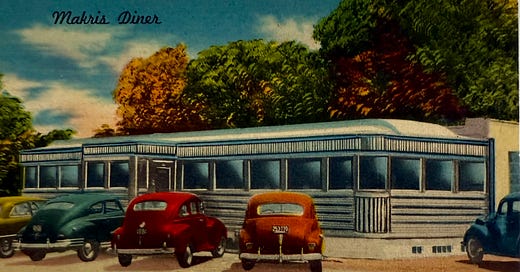



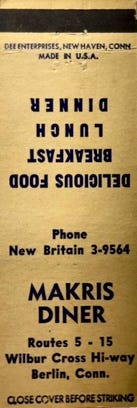
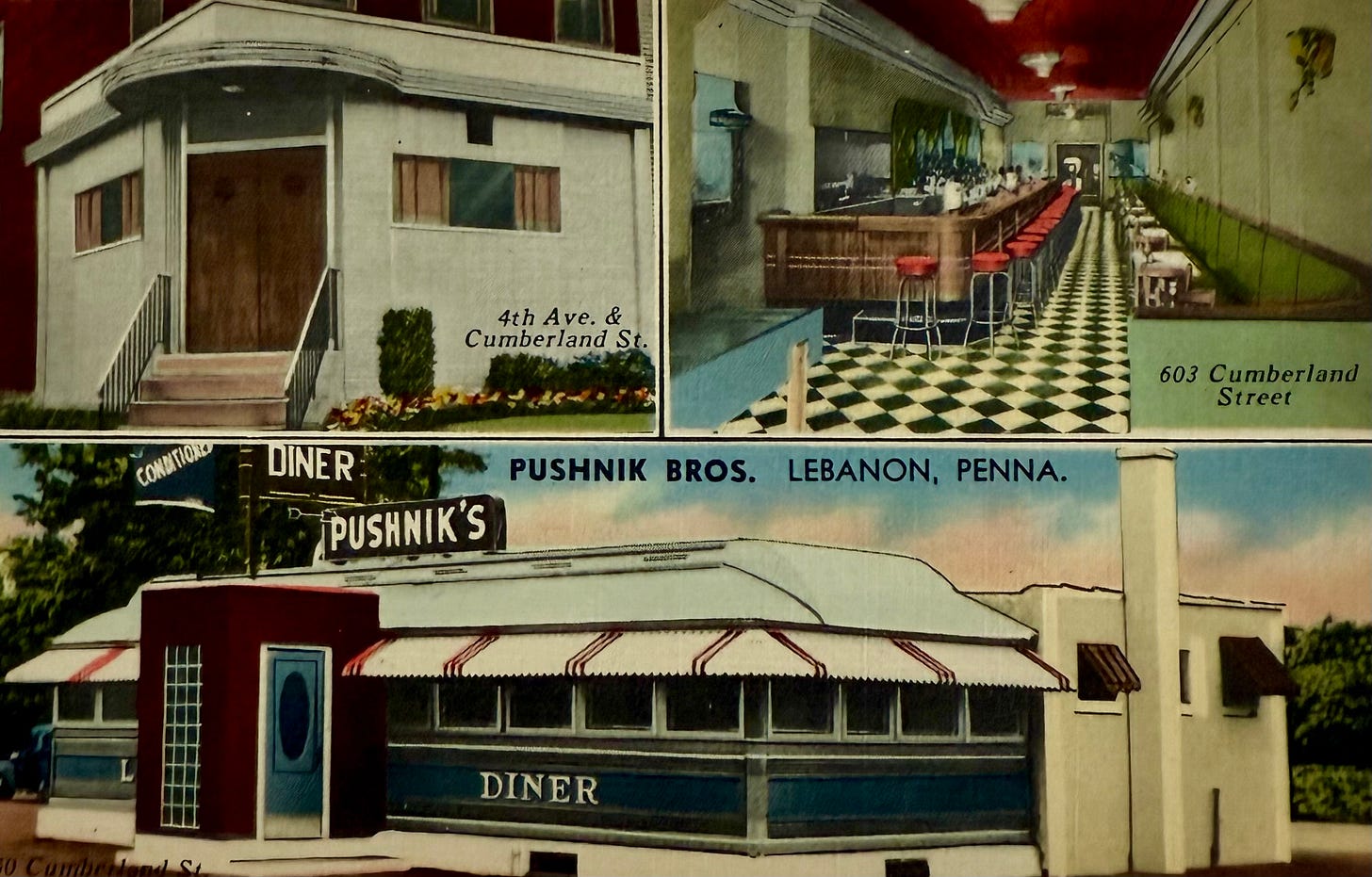
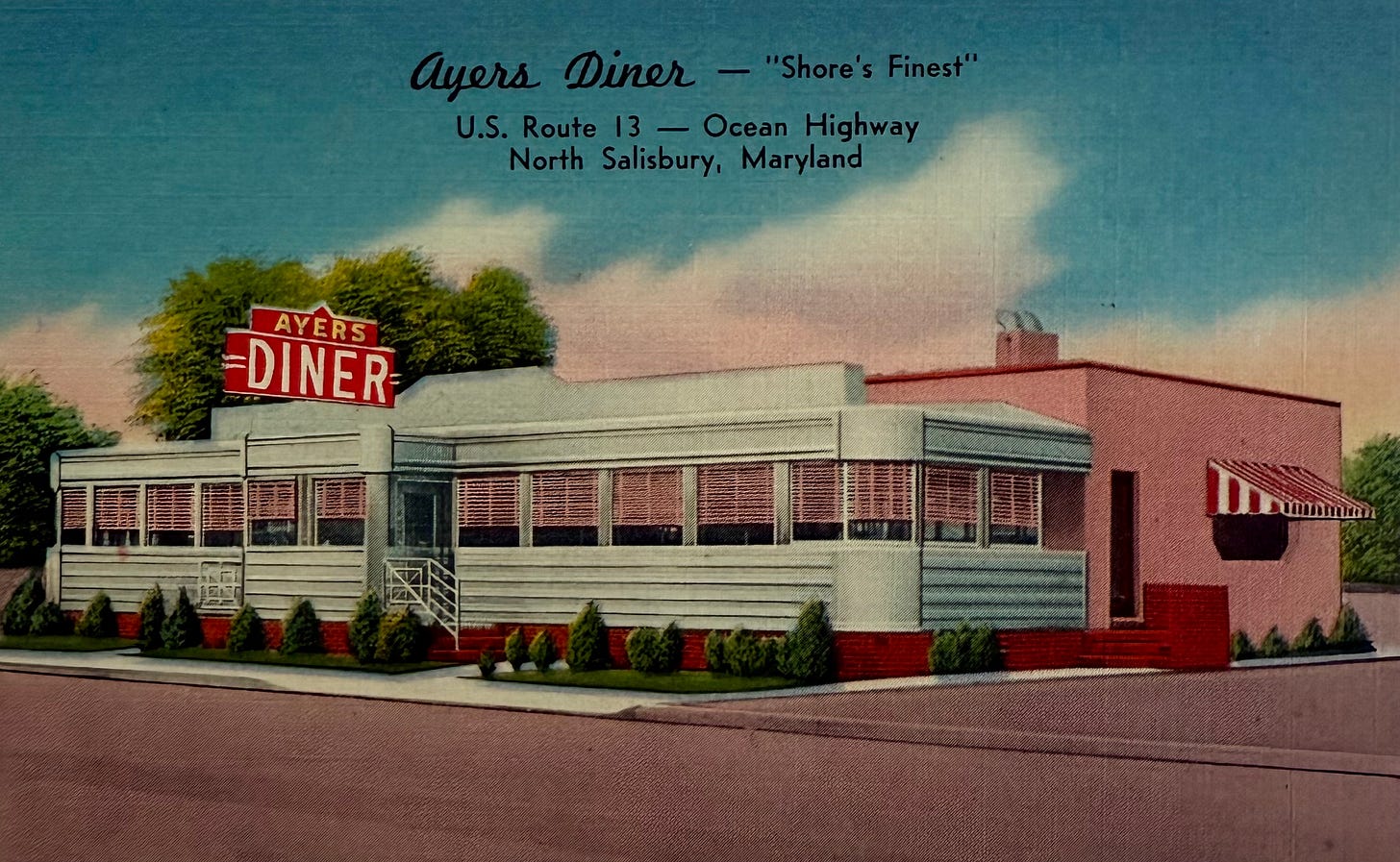
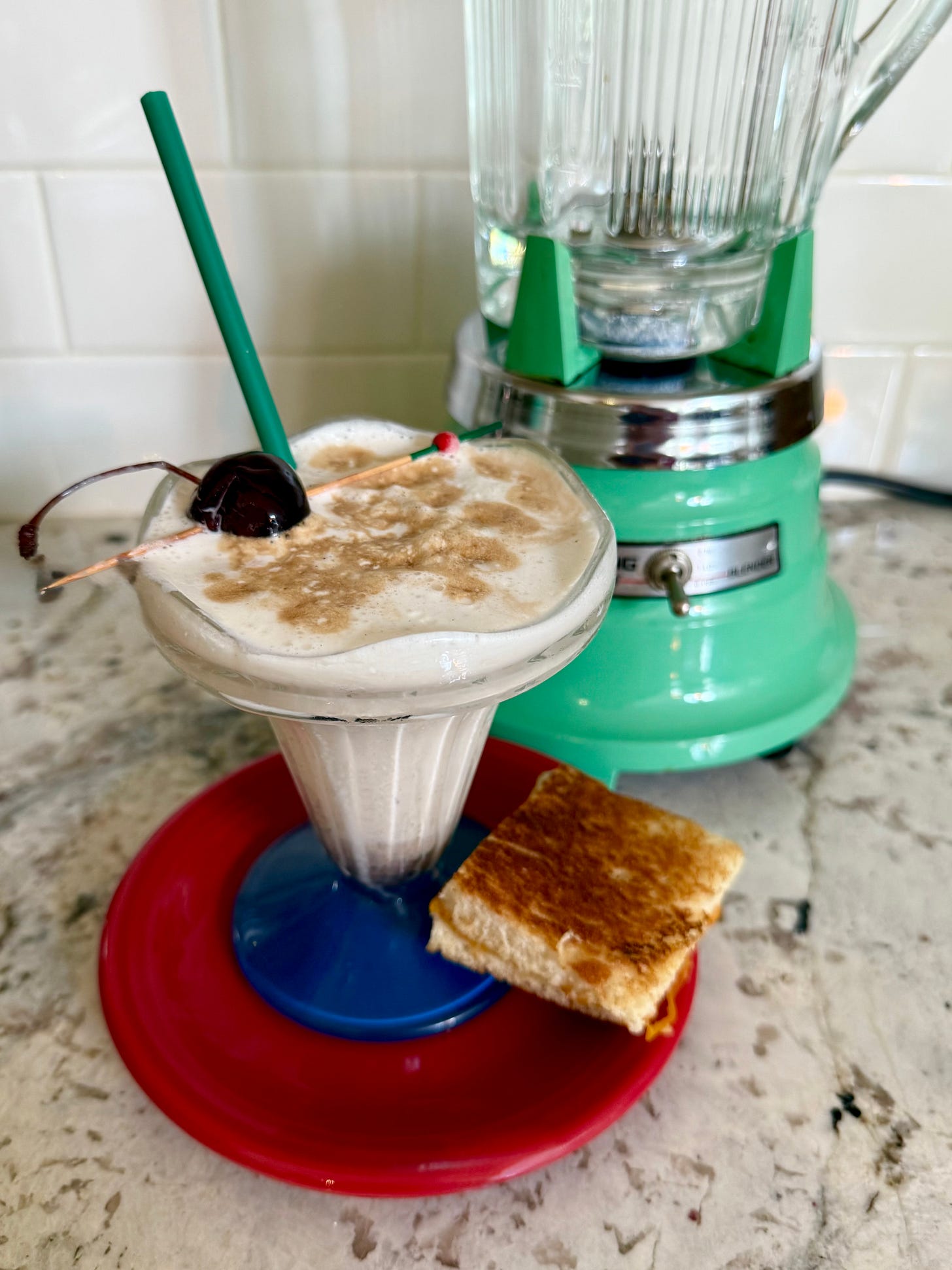
I wish I thought that line up. Cheers, Wendy!
Cheers to Diners. I grew up with the Arch, Flatlands and Ralph. Love it.